2024
Dec 16-19, 2024
AEgIS Collaboration Meeting at CERN
The AEgIS collaboration meeting at CERN reviewed the project’s progress and future direction, focusing on system updates, experimental achievements, and strategic planning. Discussions highlighted significant advancements, including the interim upgrade that opened the downstream experimental side for antihydrogen to reach the moiré deflectometer for future gravity measurements. Despite the challenges posed by this upgrade, the collaboration demonstrated remarkable progress. Key updates included improvements to the control system, lasers, and positron system, alongside detailed discussions on positronium challenges and new strategies to address low efficiency. Presentations on ballistic antihydrogen production and the development of a high-intensity, forward-directed beam target were central to plans for advancing experiments. Innovations like the OPHANIM detector, built in collaboration with the Technical University of Munich, and early tests of portable antiproton traps showcased promising new tools for upcoming studies.
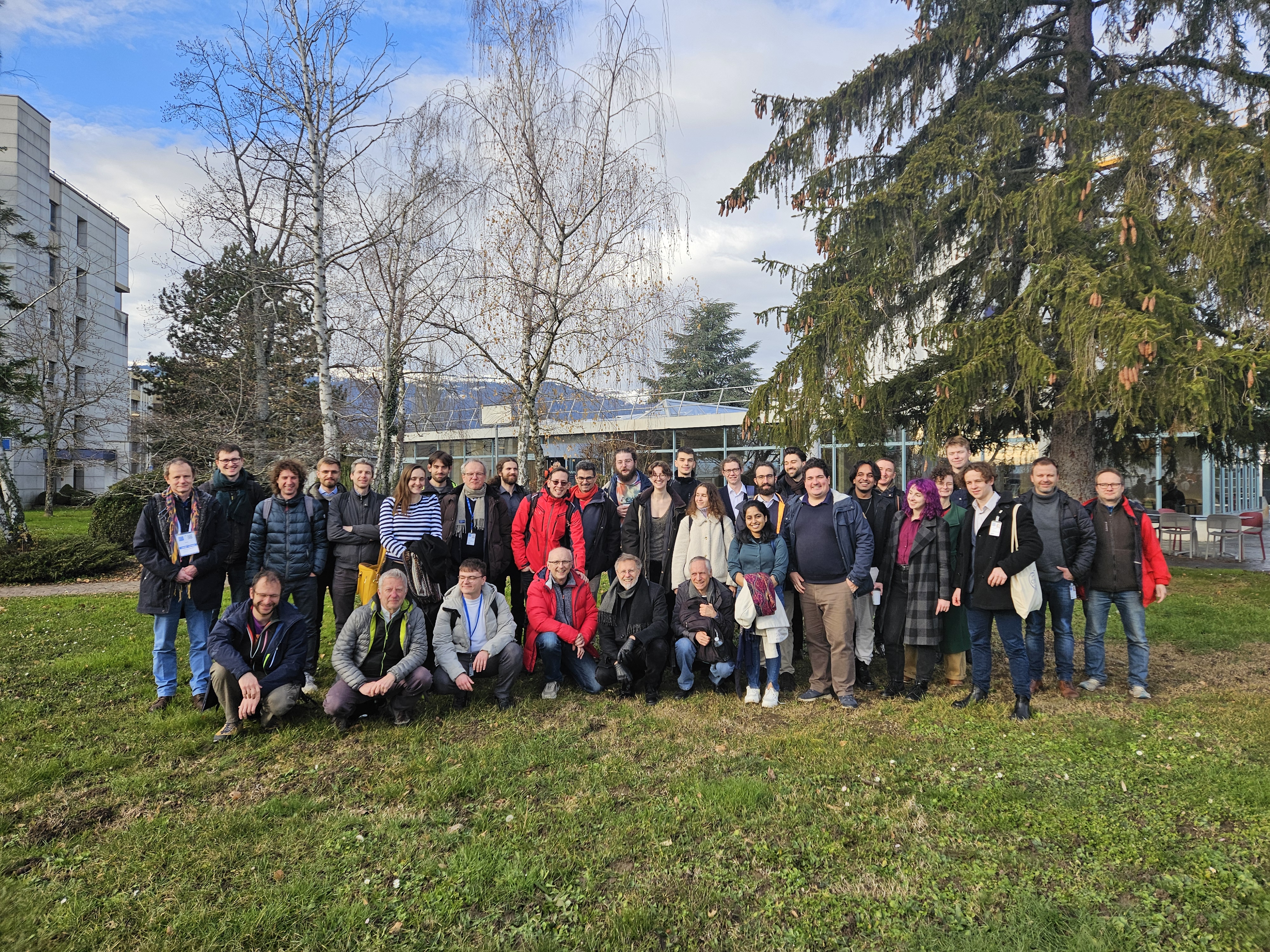


Progress was also reported on antiproton catching and accumulation, with initial results from the JPET modules providing encouraging insights for positronium and antihydrogen physics. The readiness of the moiré deflectometer and scintillators for installation marked a significant milestone in preparation for gravity experiments. Discussions extended to AEgIS's strategic role in the European Strategy Group, reflecting the project’s growing importance in the field. The Collaboration Board meeting brought organizational changes, with the election of Malgorzata as the new technical coordinator and the re-election of Ruggero Caravita as Spokesperson. A new emeriti status was introduced to honor key contributors transitioning into retirement or new careers, with Stefan Haider and Michael Doser becoming the first to receive this recognition. Looking ahead, plans for a new laser system and cryogenic positronium chamber were discussed to enhance experimental performance. The collaboration also adopted Mattermost as its new communication platform, signaling a modernized approach to team management.
December 12, 2024
Laser cooling of positronium gas recognized as a groundbreaking result in 2024

The first demonstration of laser cooling of a gas composed of positronium atoms demonstrated by the AEḡIS collaboration has been recognized by Physics World as one of the ten most groundbreaking results in physics in 2024. This recognition reflects the significance of the work within the broader physics community and encourages further progress in our research. Laser cooling of positronium, a system composed of an electron and a positron bound together, opens new possibilities for more precise measurements and experiments with antimatter. The experiment shows that it's possible to cool not only atoms but also exotic systems like positronium, which was once considered difficult to manipulate in this way. This is an important step for studying fundamental properties of antimatter, and it sets the stage for further work in areas such as precision tests of CPT symmetry and gravitational effects on antimatter. The recognition by Physics World highlights that we are moving in the right direction, but it’s only the beginning.
physicsworld.com: Top 10 Breakthroughs of the Year in physics for 2024 revealed.
September 5, 2024
Charlie Hebdo features: AEgIS and the Antimatter Factory

The well-known satirical magazine Charlie Hebdo recently published a fun and lighthearted article about CERN's Antimatter Factory, with AEgIS founding member Michael Doser as their guide. The piece, filled with amusing illustrations by Charlie Hebdo artists, humorously highlights the daily life of scientists and the complex machinery they work with. It playfully captures the mix of excitement and frustration that comes with doing such cutting-edge research—whether celebrating when the machines work or laughing at how often they don’t. In the article, they compare the process of producing antimatter to a game of bowling, but instead of hitting a strike, it takes 10,000 collisions just to create a single antiparticle. Once the antimatter is made, storing it is an even bigger challenge. Michael Doser explains how they have to use powerful magnets and keep the antimatter particles floating in a vacuum because any contact with regular matter would destroy them instantly. He also points out some of the unexpected equipment they use, like ordinary aluminum foil to keep things insulated, mixed in with expensive, high-tech gadgets.
The article captures the balance between high-level science and the sometimes surprisingly simple tools that keep the experiments running. It shows how even with million-euro equipment, scientists still need to use everyday items to solve problems. The Charlie Hebdo team makes readers appreciate the immense effort behind antimatter research at CERN, while adding a touch of humor to the amazing work being done.
May 6-9, 2024
AEgIS Collaboration Meeting in Toruń
AEgIS members gathered for the first collaboration meeting of the year in Toruń, Poland, from May 6th to 9th, 2024. The local team: Michał Zawada, Łukasz Kłosowsk and Mariusz Piwinski of the Nicolaus Copernicus University Toruń provided a rich and supportive environment for a fruitful meeting, which focused on updates and discussions on various research efforts. A sponanteuous sightseeing tour fostered the team spirit as we explored the old town and the local restaurants (and pubs) together.


The startup of all apparatus for the 2024 measurement campaign went rather smoothly, although positronium production remains lower than expected, potentially due to a strong magnetic field. Tassilo Rauschendorfer, who has previously been working as Master student with AEgIS, is now coming back as PhD student for exploring the application of machine learning in AEgIS research. Another new group, lead by Prof. Christoph Hugenschmidt from the TU Munich and the research Reactor FRM-II, is about to join the collaboration. Talks focused on the search for sexaquarks, portable pbar traps, and the Borealis project for future pbar cooling using C2- ions. A presentation on 20kV high-voltage switches for improved pbar catching sparked significant interest. This day concluded with a lab visit to the ion and atom labs at Toruń where students and postdocs presented their work. Training sessions were also held on frequency combs, a crucial tool for precision spectroscopy in research.



On the final day an update on the Moire deflectometer project was presented. Discussions were also held on magnetic field gradient cancellation techniques and ideas were presented for 1S-2S Ps spectroscopy. The AEgIS collaboration meeting in Toruń proved to be a productive event, addressing technical challenges and highlighting research progress. The flagship goal of 2024 was set to achieve an intense antihydrogen beam leaving the apparatus towards the future Moire deflectometer module outside the magnetic field. A big Thank you! to Toruń.
April 25, 2024
SIT students boost AEgIS Outreach

We are proud to highlight the achievements of the 2024 SIT students, who brought fresh perspectives and innovative ideas to our outreach and fundraising efforts. Over a six-week period from March 19 to April 25, the interns Jack Haneberg, Mason Pettit and Naisha Singh made significant progress in public engagement and industry collaboration. They triggered the first steps towards a public exhibit for the AEgIS experiment, leading to a presentation screen and a banner in front of our experiment. Creative design solutions, including the implementation of a QR code for this very website, now attract the attention of over 150,000 visitors annually. They also explored new fundraising strategies and made efforts in preparing pitch decks and initial outreach emails to local industries and businesses. Their strategic and business-oriented mindset led to an interesting contact to the CERN OpenLab and beyond, generating ideas for future collaborations. Thank you for your very welcomed contributions to the antimatter world!
February 22, 2024
First demonstration of the laser cooling of positronium atoms
Today, our paper reporting on the first demonstration of laser cooling of positronium has been published in Physical Review Letters [1]. Following 30 years of effort by the community, this result is an important milestone in the field of antimatter physics, as the availability of cold samples of positronium atoms paves the way for new exciting experiments and technological breakthroughs.
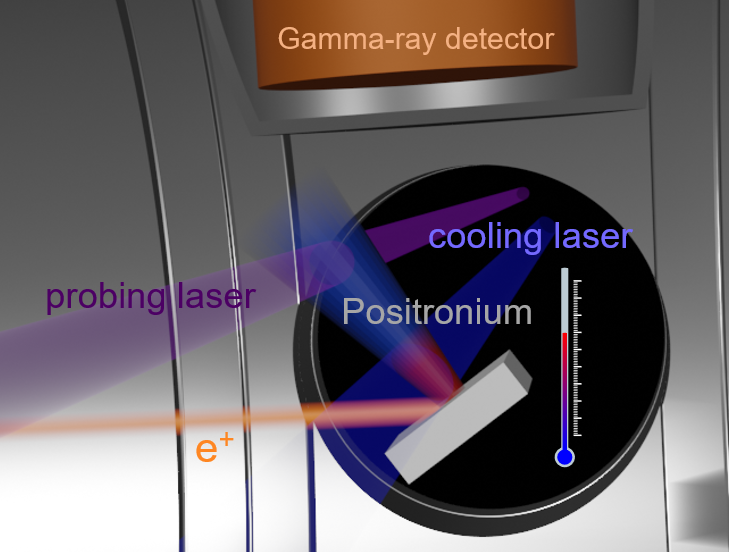
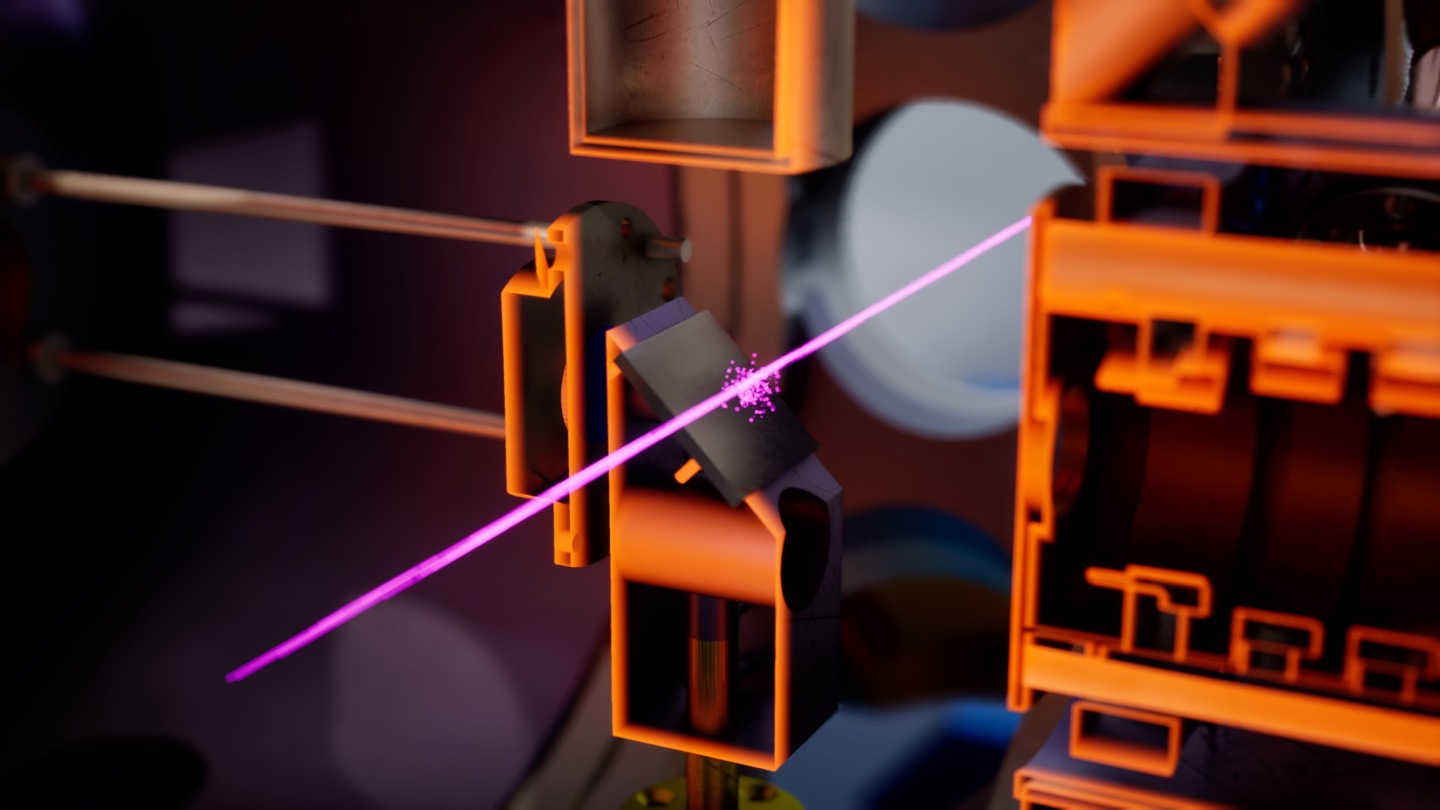

Positronium, an exotic atom consisting of an electron and its antimatter counterpart, the positron, shows some unique properties. Its constituents mutually annihilate and destroy each other only 100 billionths of a second after the atom is created. Positronium is the lightest atom known and moves at large velocities. It cannot be trapped due to its neutrality and missing magnetic momentum, and it cannot touch anything made of normal matter since it would also annihilate. These features make experiments with positronium very challenging.


Reducing the velocity of an ensemble of positronium atoms will facilitate more accurate and precise measurements. The expressions velocity and temperature are often used interchangeably in physics. Lowering the temperature reduces the average kinetic energy, equivalent to decreasing the atoms' average velocity. Therefore, atoms are much easier to study in a cold ensemble, and their properties can be measured more precisely.
The technique used at AEgIS to cool positronium is called Doppler cooling. It is based on the momentum transfer between atoms and light and the Doppler effect. Most people are familiar with the Doppler effect in sound waves, where the perceived frequency (or wavelength) depends on the relative motion between the observer and the source. This phenomenon is not exclusive to sound waves but applies to electromagnetic waves in all frequency domains, including UV, visible, and infrared light.
The approach taken by AEgIS is to irradiate a sample of positronium atoms immediately after they are produced with a broadband laser featuring a pulse length in the order of positronium’s lifetime. A broadband laser emits light across a large range of frequencies and, therefore, is suitable for cooling a large fraction of the ensemble at once. A laser system with the features needed for laser cooling of positronium is unavailable commercially and was developed and constructed on-site specifically for this purpose by AEgIS.


The possibilities that emerge from the availability of cold positronium include high-precision measurements on a simple matter-antimatter system and precision tests on Quantum Electrodynamics and the Equivalence Principle, which might contribute to shedding light on the matter-antimatter asymmetry of the universe.
Another exciting prospect is the formation of a so-called Bose-Einstein condensate, which typically requires very low temperatures. A Bose-Einstein condensate is a state of matter in which all atoms occupy the same quantum state, leading to unique and fascinating effects. Bose-Einstein-condensation in a gas of antimatter atoms still remains to be observed.
A positronium Bose-Einstein condensate is considered the basis for the potential realization of a source of coherent light in the gamma-ray regime. A controllable gamma-ray source would be an invaluable tool as, for the first time in history, spectroscopic measurements could be performed on atomic nuclei, leaping into a new era of fundamental and applied research.
The successful application of laser cooling techniques to positronium has brought the scientific community one step closer to this and many other possibilities.
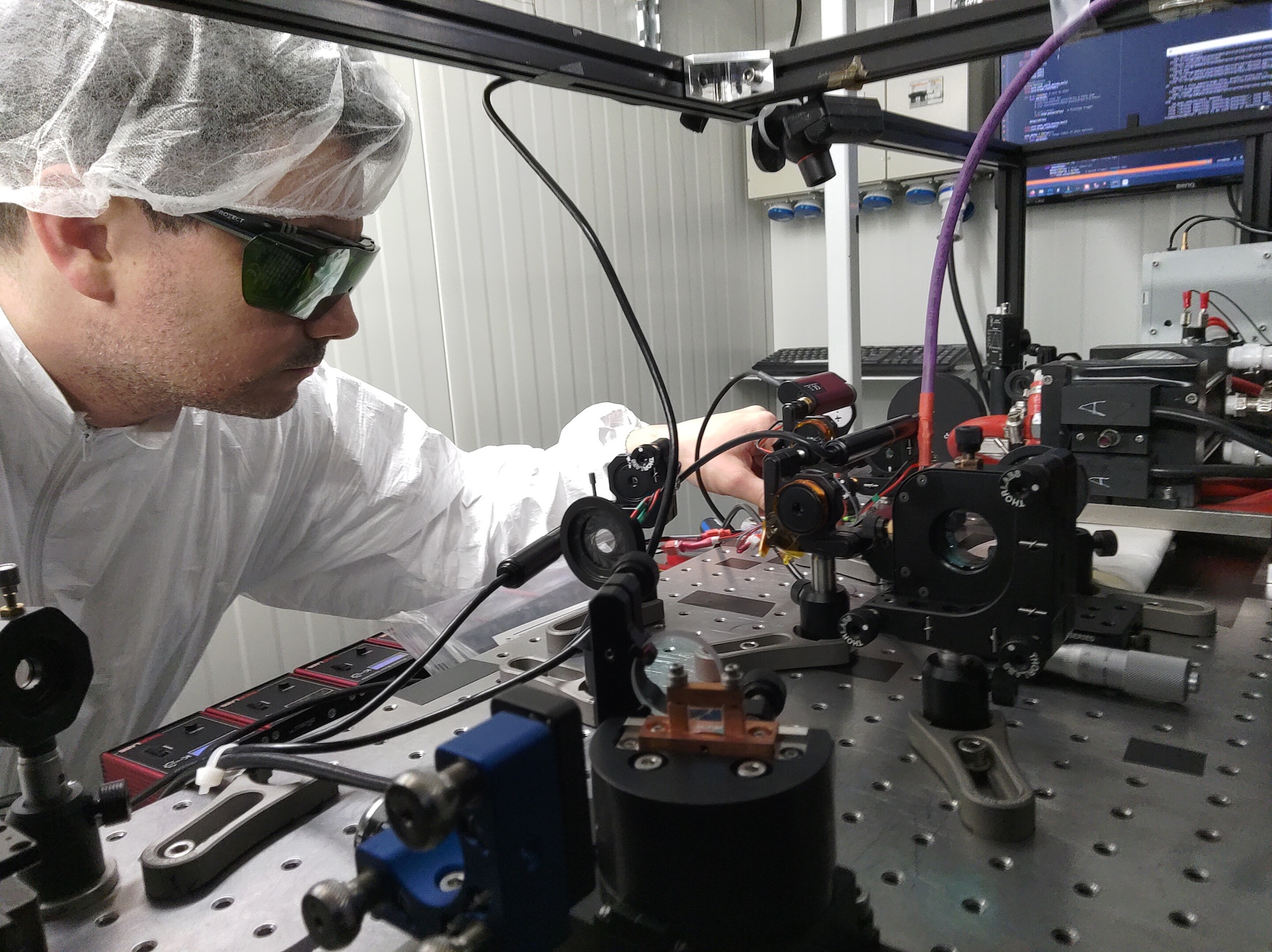
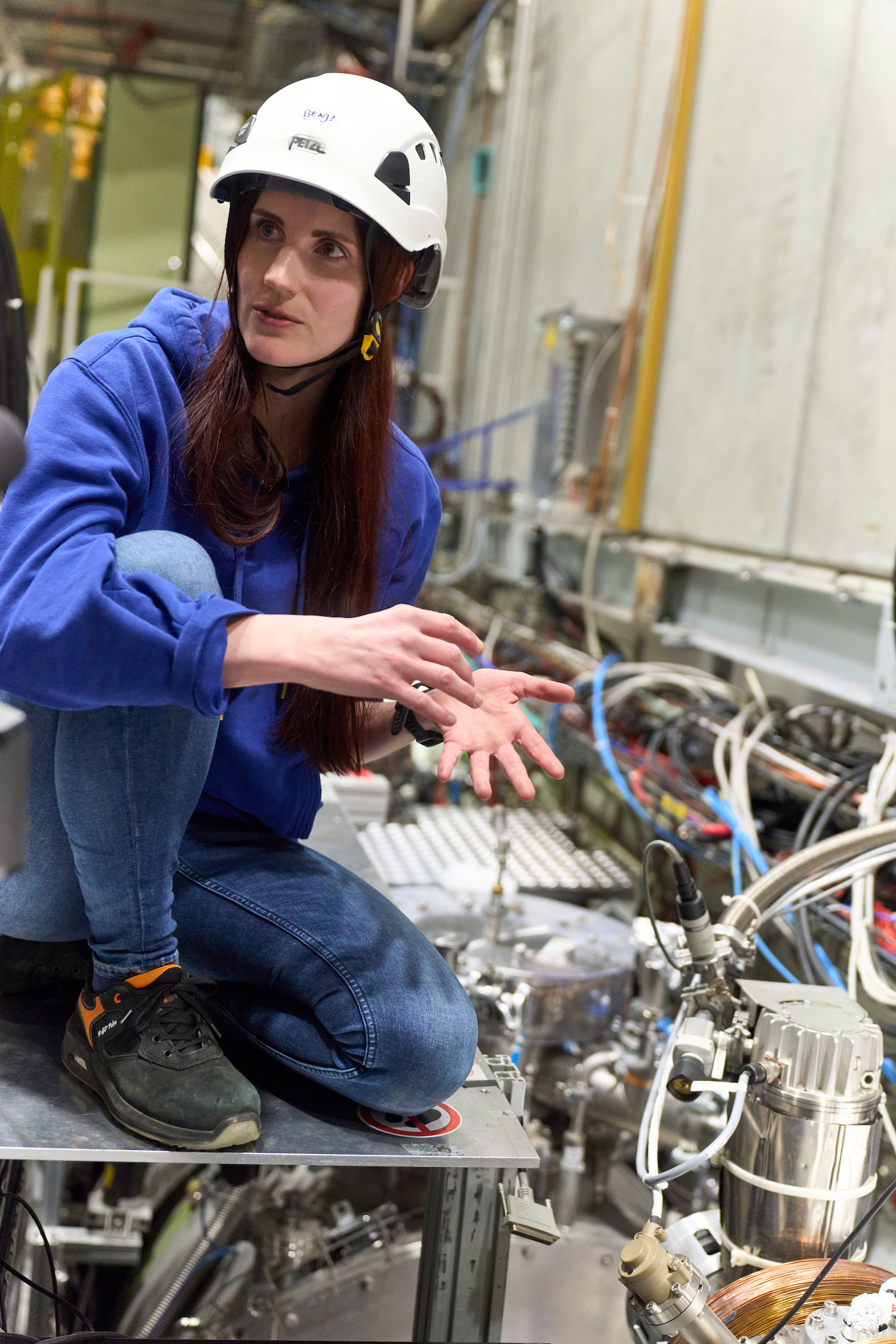

[1] L. Glöggler et al.: Phys. Rev. Lett. 132, 083402 (2024)
[5] Positronium laser cooling in 3 minutes.
January 15, 2024
OPEN PHD STUDENT POSITION

If you are about to graduate from university, what about pushing the frontier of science as a PhD student at the Cockcroft Institute / University of Liverpool in a joint project with the AEgIS collaboration at CERN? Visit (1) and file in your application! In your project, you will investigate: gas jet targets for studies into eV beam interactions; quantum sensors as single particle detectors; beam quality optimization through realistic 3D start-to-end and trapping simulations; efficient integration of beam and particle diagnostics through simulation and experiment.
January 01, 2024
JAGIELLONIAN UNIVERSITY JOINS AEGIS

Both the Marian Smoluchowski Institute of Physics and the Centre for Theranostics of the Jagiellonian University Krakow, Poland, join AEgIS. The group around Pavel Moskal has been pioneering cost-effective positron emission tomography based on plastic scintillators and the method of positronium imaging. Their knowledge of plastic scintillators and resulting spectra will greatly benefit AEgIS endeavors with precision positronium studies, but also the detection of atomic antihydrogen beams.
2023
December 11th-13th 2023
AEGIS COLLABORATION MEETING
The third of three annual AEgIS collaboration meetings convened at CERN in Geneva from 11 – 13 December 2023, to review progress over the past six months and plan future experiments. Ruggero Caravita welcomed attendees and outlined the agenda. Talks covered outreach initiatives, apparatus performance, and upgrades, including the integration of the Iodine source. Updates on the antiproton trap system, Data Acquisition (DAQ), and control system were provided. The second day focused on antiproton capture and cooling, positronium excitation, and trap preparations for antihydrogen production. Collaborative board meetings appointed new coordinators and concluded with a Christmas dinner. The final day featured discussions on ALPACA visualization, portable antiproton traps, and Doppler Shift Spectroscopy. Talks also covered image plane detectors and theoretical perspectives on positronium physics. The meeting showcased significant progress and collaboration within the AEgIS group, from antiproton capture to positronium physics. Plans for the winter shutdown and upgrade schedule were discussed, highlighting ongoing advancements in experimental techniques and theoretical understanding.
September 27, 2023
ANTIMATTER FALLS DOWN, NOT UP
A milestone has been reached! A CERN experiment shows for the first time in a direct measurement that antimatter feels gravity in the same way as normal matter - in the limits of the measurement's precision. Thus, researchers observe 75% +/- 13% (stat. + sys. errors) +/- 16% (simulation error) of normal gravity. The journal Nature describes this ALPHA-g experiment in detail (1): "After making a thin gas of thousands of antihydrogen atoms, researchers pushed it up a 3-metre-tall vertical shaft surrounded by superconducting electromagnetic coils. These can create a kind of magnetic ‘tin can’ to keep the antimatter from coming into contact with matter and annihilating. Next, the researchers let some of the hotter anti-atoms escape, so that the gas in the can got colder, down to just 0.5 °C above absolute zero — and the remaining antiatoms were moving slowly.
The researchers then gradually weakened the magnetic fields at the top and bottom of their trap — akin to removing the lid and base of the can — and detected the anti-atoms using two sensors as they escaped and annihilated. When opening any gas container, the contents tend to expand in all directions, but in this case the anti-atoms’ low velocities meant that gravity had an observable effect: most of them came out of the bottom opening, and only one-quarter out of the top."
However, "Insiders have long expected that any violation, if it exists, cannot be over 1%,” says Caravita, the spokesperson of AEgIS. So we may say the next milestone is already defined - looking for a violation at the percent level. This new result is certainly an achievement, which made it into a series of science journals: (1)-(4).
July 24, 2023
IMAGING THE PS TARGET

Our micro-channel plate detector (MCP) is a versatile and powerful piece of diagnostic. It consists of a thin plate which is perforated by a multitude of angled micro-channels - looking like a well-structured Swiss cheese. Now, applying a high voltage from one surface to the other, imapcting particles on the one side release secondary electrons, which get accelerated by the strong potential landscape. Since the micro-channels are angled with respect to the plate surface, the secondary electron will soon crash again into the channel wall, releasing even more electrons. It is an avalanche! Only one single incoming particle can produce up to 100.000 electrons on the other side. We accelerate these electrons again and let them hit onto a phosphor screen. It starts to glow beautifully in the green visible range - except where something was in the middle of the electron path such as here, were we see the shadow of the converter target used to create the exotic positronium atom.
June 1, 2023
LASER BEAM DIAGNOSTICS IN OPERATION
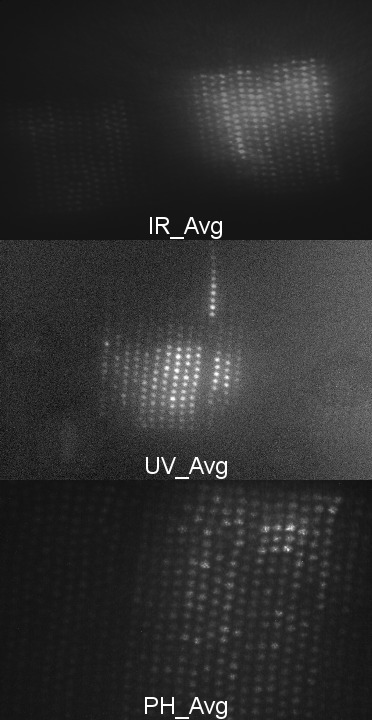
Today we had a big success! We could steer into the experiment and observe on each of the cameras all our laser beams, UV (205nm), PH (1064nm) and IR (1650nm), which we will need for Ps excitation to Rydberg levels, and later for antihydrogen formation. With this, we have fully validated our approach of imaging the beam with our multi-fiber detector at cryogenic temperature in ultra high vacuum. The UV and IR-rated fibres transmit the residual light after reflection — so that most of the powerful laser light can leave the cryogenic area again — through narrow and inaccessible parts of the experiment to a viewport, where the beams can easily be observed (depicted on the left). This suggests that steering our laser beams to the locations of interest has now literally become a piece of cake! Big prosit to all who were involved in this major effort: from the idea, construction, implementation and testing, camera setup and alignment - for science!
May 31, 2023
THE NEW AEGIS WEBPAGE ONLINE
The hard work of our SIT students in 2023 is coming to fruition this June as we prepare to launch our new webpage. Following a brief internal review, the webpage will soon be available online. We will continuously update the "Publications" and "Reports" sections with new results as they emerge. Our commitment extends to keeping the "Teams" and "Contacts" sections updated. Additionally, we aim to provide timely "News" updates and even explore research topics that may pique the interest of students, postdocs, and experienced researchers.
May 28, 2023
LEPTONS IN THE AEGIS APPARATUS

A major milestone has been achieved in 2023! Electrons and positrons, some of the essential ingredients for creating antihydrogen, have taken center stage. Nearly a billion electrons are sourced from an electron gun located at the entrance of our 5T magnetic field, which we refer to as the "SUN"-chamber. These electrons can either be trapped in our traps or directly streamed towards the imaging MCP detector situated at the end of the second magnetic field, known as "1T." This process is depicted in the image on the left. Due to the excellent confinement of the magnetic field, the electron spot measures only a fraction of a millimeter in diameter. A similar outcome has been achieved with the positrons extracted from our positron accumulation system. Around a million positrons are transported inside a low magnetic field, accelerated to a few kilo electronvolts kinetic energy by using a pulsed high voltage tube, and then introduced into the "5T" field along the central beam axis. These positrons travel downstream along the magnetic field lines towards the 1T MCP detector.
May 9-11, 2023
AEGIS COLLABORATION MEETING IN WARSAW
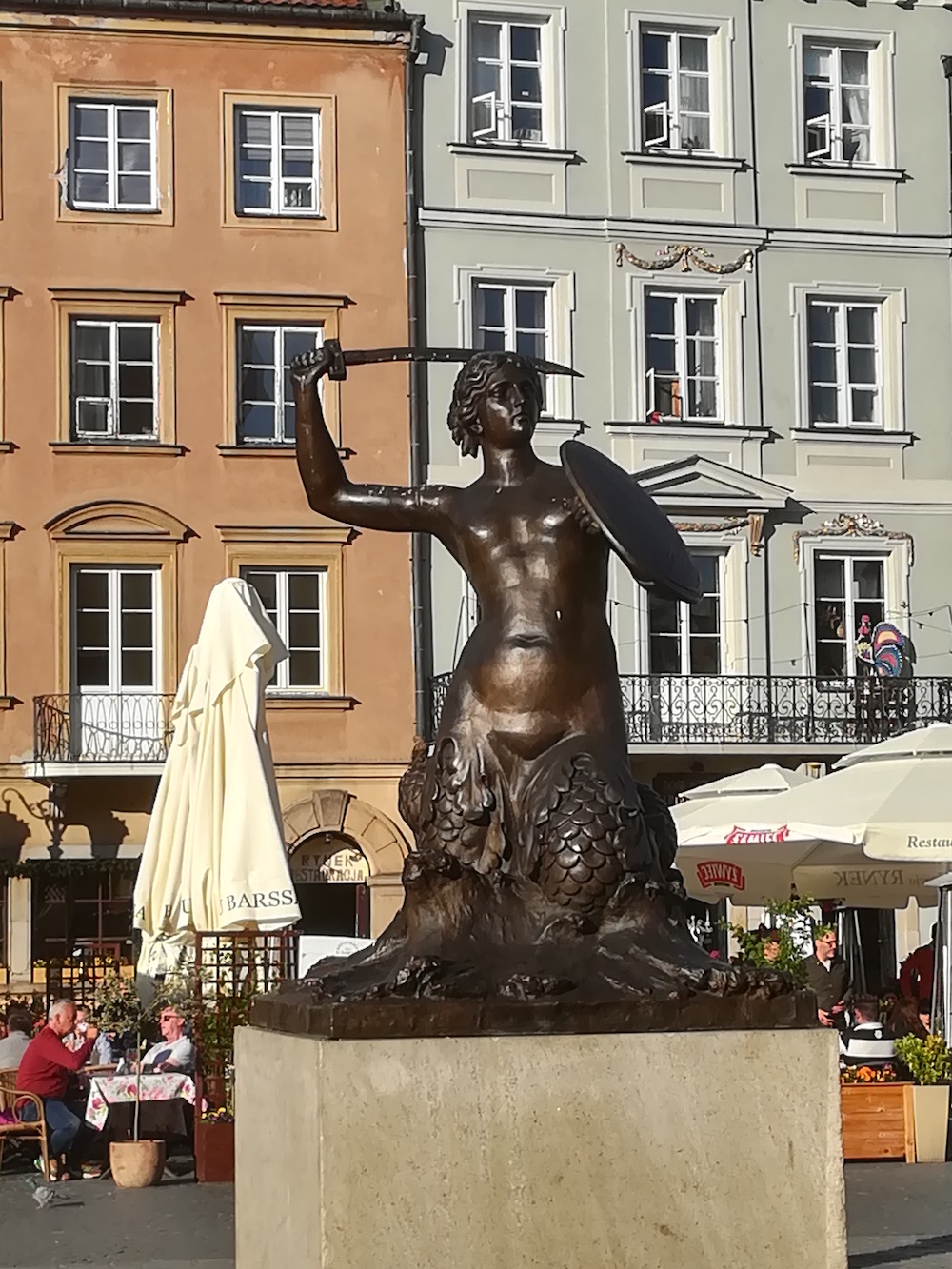
The first of the three annual AEGIS collaboration meetings recently took place outside of CERN, marking the first time since the outbreak of COVID-19. The Institute of Physics of the Polish Academy of Sciences, located in Warsaw, hosted more than 20 collaborators in a welcoming and inspiring environment. Led by Tomasz Sowinski, the organizing team made highly appreciated efforts to coordinate the conference room, lodging, venue, and the locations for several social seightseeings and come-togethers. Or as the Polish would say, in line with their traditions, lunch and dinner were combined into one delightful feast featuring an abundance of Polish Pierogi, which are typically savored around 2-3 pm. AEgIS leveraged the opportunity to not only plan the roadmap of physics in 2023 but also explore the beautiful capital city of Poland.
April, 2023
AEGIS READY FOR BEAM
Following painstaking efforts to search for leaks, align equipment, and apply a series of ultimately successful techniques — including those ingeniously implemented by our technical coordinator, Stefan Haider, demonstrating once again the value of VacSeal® — the AEgIS apparatus has now achieved ultra-high vacuum levels of at least 10-12 mbar. With temperatures reaching 4.2 K through liquid helium, both the 5 Tesla and 1 Tesla magnets have been successfully ramped up. This marks the dawn of the 2023 physics program, with the ambitious goal of setting a new record for the intensity of a pulsed antihydrogen source.
March, 21, 2023
SIT STUDENTS JOIN AEGIS TEAM

Five US students studying abroad in Switzerland join the AEgIS team as an "Outreach Taskforce" working on fundraising, graphic design, and web design. These students join us from numerous different institutions such as Colorado College and Denison University to collaborate on the continued success for our experiment. The webpage design as of 2023, for instance, is one of the many achievements the students have accomplished during their time with us. AEgIS continues to develop their outreach opportunities and looks forward to welcoming more students in the future.
2022
January 6, 2022
LIVERPOOL UNIVERSITY JOINS AEGIS
The new year 2022 sees a new group from Liverpool University joining AEgIS(1) with a focus on the development of next-generation positron/positronium converter targets, the formation and transport of pulsed antihydrogen beams with unprecedented intensity and Stern-Gerlach type experiments on a cold positronium beam.

The new Liverpool group is not a newcomer to CERN, however: the University of Liverpool has closely collaborated with CERN on low energy antimatter physics for more than a decade, having made key contributions to another antihydrogen experiment, and through the Cockcroft Institute, Liverpool experts have pioneered a number of instrumentation solutions. This includes a cryogenic current comparator for the non-invasive intensity measurement of nA beams, gas jet-based beam profile monitors, as well as novel sensors for the 3D mapping of electrostatic fields in ion traps and beam transport lines. Moreover, the University of Liverpool has initiated and coordinated the Horizon 2020 “Accelerators Validating Antimatter physics” (AVA)(2) network between 2016 and 2021. This was the largest-ever research and training network on low energy antimatter physics and included a Fellow based in AEgIS.
2021
November 16, 2021
ART EVENT IN TOKYO WITH IMAGES FROM AEGIS
On November 16 in Tokyo, the event Connected Ink (sponsored by Wacom) took place. Although AEgIS was not directly involved in this art-science interaction, one of the session that involved researchers and artists from CERN, the Ars Electronica lab, the University of Arts in Belgrade and Kyoto used imagery from AEgIS: antiprotons annihilating in photographic emulsions, a tribute to the visual and emotional power of our work on antimatter.
April 21, 2021
INSTITUTE OF PHYSICS PAS JOINS AEGIS

The theoretical group from the Institute of Physics of the Polish Academy of Sciences in Warsaw has joined the AEgIS experiment. Their main task is the theoretical investigation of the properties of antiprotonic atoms, which will be studied in the next phase of the AEgIS experiment. Welcome to Warsaw, we are happy to explore and grow together with our new collaborator.
February 8th, 2021
PULSED PRODUCTION OF ANTI-HYDROGEON
Our paper demonstrating pulsed production of antihydrogen has just been published in Communications Physics; this is the first time that antihydrogen atoms have been made in a pulsed manner (normally, their production is continuous) such that we know the time of production to about 100 ns. This opens the door for synchronous laser or electric field manipulations for studies of the formed atoms, and represents the next step towards pulsed formation of a horizontally-flying beam of antihydrogen atoms, a prerequisite for the AEgIS approach to measuring the gravitational interaction between matter and antimatter.
It also opens the possibility of pulsed formation of other antiprotonic atoms, such as protonium (a proton-antiproton atom), of even of antiprotonic molecules. Knowing exactly when such a mixed matter-antimatter system is formed means that it becomes amenable to study in the few 100 ns or microseconds of its existence, before the antiproton can annihilate with a proton or a neutron of the nucleus. You can read more about it and more generally, about experiments at CERN attempting to measure the gravitational interaction between antimatter and matter, in the given reference below.(1)
2020
November 16, 2020
WARSAW UNIVERSITY JOINS AEGIS
A new group from Warsaw University of Technology has joined(1) AEgIS; this is the first Polish group to be involved low energy antimatter research. The new WUT group is not a newcomer to CERN, however, since it is also pioneering work on antiproton-proton femtoscopy within the ALICE experiment at the LHC.
January 6, 2020
WIRED ARTICLE: "HOW THE EXTREME ART OF DROPPING STUFF COULD UPEND PHYSICS"
Efforts to test gravity, and more specifically, General Relativity, look in every corner and keep trying to push precision. A recent article in the Wired(1) magazine focuses on a recent test of General Relativity in space, but puts those tests into a larger context of Lorentz invariance tests, in which also AEgIS gets a small mention.
2019
November 5, 2019
HIGH SCHOOL STUDENTS!
AEgIS (and many other experiments at CERN) sometimes also host high school students, involving them in projects at the forefront of research, and for two weeks, giving them a first taste of what research really entails.
In the first-ever event for Austrian students, twenty four students selected among many applicants from high schools all around Austria participated during the last two weeks of October in the high school student internship program at CERN(1), working on a range of research projects (here's the list of projects)(2). Two of them chose to work on the small side experiment Borealis with its source of C2- molecular ions, trapped in a Paul trap, continuing the work started by the summer students that had come a few months earlier to verify that these ions are in the ground state, a necessary precondition to being able to laser-cool them. The laser light of just the right color (energy) needed to excite them from the ground state to the neutral state is now at the point where the stability of that laser became the next important issue, and these two students spent a lot of their time here being involved in efforts to laser-lock the crucial laser.
The students took it into their hands to define some further activities in addition to their work and visits of several experiments, and decided to talk with researchers to ask them about all the often very deep and difficult questions that they had about physics, research, and what it is like to work as a scientist. What was initially foreseen as half of an hour discussion with our students Anja Schwab and Alexis Treitler turned into six of the students piling into my office for two hours, and then a second two hour question and answer session with all the students two days later. Their thirst for information, their enthusiasm and the level of their knowledge is amazing, and we look forward to next year's groups of students from Belgium, Denmark, Greece, Italy, Romania and Switzerland (2020 HSSIP countries)(3).
(1) Web CERN Internship Portal
(2) Web CERN Austrian HSSIP 2019
(3) Web CERN National Programme
August 5, 2019
SUMMER STUDENTS!
Every year, the AEgIS experiment (and many other experiments at CERN) hosts several CERN summer students, involving them in projects at the forefront of research, and giving them a first taste of what research really entails. In contrast to university studies, generally, the problems being looked at by them don't have ready-made solutions. Instead, the students themselves have to use their knowledge, creativity and their ability to learn new tools quickly to come up with ways of completing their projects in only a few months.
This year, we are hosting two students, Kanako Narita and Ravindi Sannasgala Mudiyanselage, both of whom are working on projects surrounding our attempt at laser cooling an anionic system. The goal is to be able to cool antiprotons indirectly, by laser-cooling a negatively charged system. To date, no anionic systems have been laser-cooled, although of course atoms, positively charged ions, and a very small number of (neutral) molecules have been cooled to very low temperatures. Among elements, only La- appears to be a possible candidate, although working with it in a magnetic field would entail many difficulties. That is why we have looked into alternatives, and here negatively charged molecules seem very promising.
A small side experiment to AEgIS (called Borealis) has built up a source of C2- molecular ions, and has trapped them in a Paul trap. The next step is to verify that they are in the ground state, a necessary precondition to being able to laser-cool them. In order to check for this, we will shine laser light of just the right color (energy) to excite them from the ground state to the neutral state; detecting the liberated electron will prove that indeed, they are in the ground state. This is where the students come in: both of them are deeply involved in setting up the measurement, calibrating the lasers and electron detectors, and preparing the attempt that will take place before the end of their time at CERN.
As part of their time at CERN, in addition to working in experiments and hearing lectures about physics and technology given by world experts, the students also have the occasion to present their work to others students and researchers, either through poster sessions or through public presentations; the photo above shows Kanako Narita presenting her research work within Borealis in CERN's Council Chamber.
July, 5 2019
ANTIMATTER OR DARK MATTER?
An exhibition at the London Science gallery on dark matter features work by the artist duo Semiconductor based on photographic plates produced in AEgIS, and provided to them by us. Here's the tweet from the Science gallery:
Our #ArtOfTheDay today is this “space-time lapse” in #DARKMATTER by @semiconducting. Using data from the #AEGIS experiment @cern, these delicate lines are actually collisions between matter and antimatter! An animation can be seen here(1). #Physics #KingsCulturalCommunity.
Although dark matter and antimatter are very different things (antimatter can be produced and studied in the lab, while nobody knows what dark matter actually is), both concepts are equally attractive to artists. The artist couple Semiconductor that spent several months at CERN as resident artists in the Arts at CERN program interacted with many groups and individuals, among them the AEgIS experiment. They were particularly drawn to the photographic plates that were recorded in the framework of a study on detecting antihydrogen atoms with the highest possible spatial resolution, that was carried out in AEgIS in 2014 and 2015. The plates had been scanned by the collaborating group at the University of Bern in tiny squares of 200 x 200 micron, stepping through the exposed and developed emulsion that had been exposed to very low energy antiprotons (that thus annihilated at the surface of the plates). The resulting annihilation fragments flew through the photographic plates, and allow detecting the point at which the annihilation between antiprotons and nuclei in the emulsion took place. The particular poetry of these spectacular disappearances are made visible in the (artificially grainy) movie that Semiconductor constructed from the numerous images supplied to them by us.
June 9, 2019
STARSET VISITS AEGIS
Antimatter experts a pull on a wide range of visitors that pass by the AEgIS experiment, but it is upon artists that the attraction is greatest. The most recent artist to pass by is Dustin Bates, who founded the band Starset and is also the band's lead singer, songwriter, and keyboardist. Given his long-standing interest in astronomy and physics, it was only a question of time before he passed through CERN, and we were able to show him around the antimatter experiments, and AEgIS in particular.
May 5, 2019
ATTRACTIVE PROJECTS
A completely novel and fascinating call for breakthrough technology projects by the EU in the framework of the Horizon 2020 program was launched last year, and recently, the 170 winning projects (out of around 1500 submissions) were announced(1). The full list of fascinating and often revolutionary projects can be found here(2) but for us, the most important aspect is that one of our submissions, called O-possum II (for "ortho-positronium surface scanning microscope") was funded!
Our project is built on the idea of using lasers to cool a very short-lived atom, positronium, which consists of an electron and an anti-electron. This atom, which only lives for 142 ns (about a tenth of a millionth of a second) is produced by shooting positrons into a custom-made nanostructured material (which is one of the key technologies of the AEgIS experiment), and comes out into a hemisphere at speeds of around 100 km/s. We want to use special lasers to bundle this wide cone and transform it into a narrow cone, ultimately a beam, with which material surfaces can perhaps one day be scanned. Laser-cooling of atoms usually takes many tens of thousands of photon-atom interactions, and thus takes time; luckily, positronium is very light, so although there is only very little time available for photon-positronium interactions, around 50 to 100 such interactions should be sufficient. By selecting a laser wavelength of 205 nm corresponding to a transition between the ground state and the 2P state, whose lifetime is around 1.5 ns, it might just be possible to sufficiently cool the positronium atom before it annihilates. Once it is cold enough, its lifetime can be extended by exciting it into a longer-lived metastable state(3).
Contrary to charged particle-based microscopy, a positronium microscope would be insensitive to electric fields in proximity to the surfaces to be probed/scanned. It can thus be used to study metallic as well as isolating surfaces. Furthermore, due to the very low mass of positronium, perturbations in the probed surface are not to be expected during the acquisition of an image. Most importantly, the presence of a positron in positronium, which will annihilate with any electrons present at the surface being probed/scanned, strongly suggests that a positronium microscope has the potential to sensitively map the distribution of electrons at the surface being investigated through detection of the annihilation rate as a function of the position of the focus of the positronium beam. This is a completely novel tool that should allow new insights into static and dynamic processes at intentionally patterned material surfaces, e.g. solid-state devices, nano-patterned assemblies, etc.
May 20th, 2019
LONG LIVE POSITRONIUM!
To be useful for antimatter gravity experiments, a source of positronium atoms needs to produce long-lived atoms in large numbers, and with known velocities that can be controlled and are unaffected by disturbances such as electric and magnetic fields. The new AEgIS source ticks all of these boxes, producing some 80 000 positronium atoms per minute that last 1140 ns each and have a known velocity (between 70 and 120 km/s) that can be controlled with a high precision (10 km/s).
This is not the first time that researchers have produced a source of long-lived positronium atoms. There are other techniques that do so, including one that involves bringing the atoms to electronic states called Rydberg states, and which could also be used to perform gravity experiments with positronium. But all of these are very sensitive to electric and magnetic fields, which influence the atoms’ velocity and would need to be factored into future gravity measurements. The new method devised by AEgIS is “cleaner”, in that it is almost insensitive to these fields.

